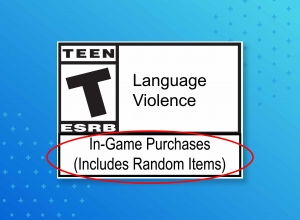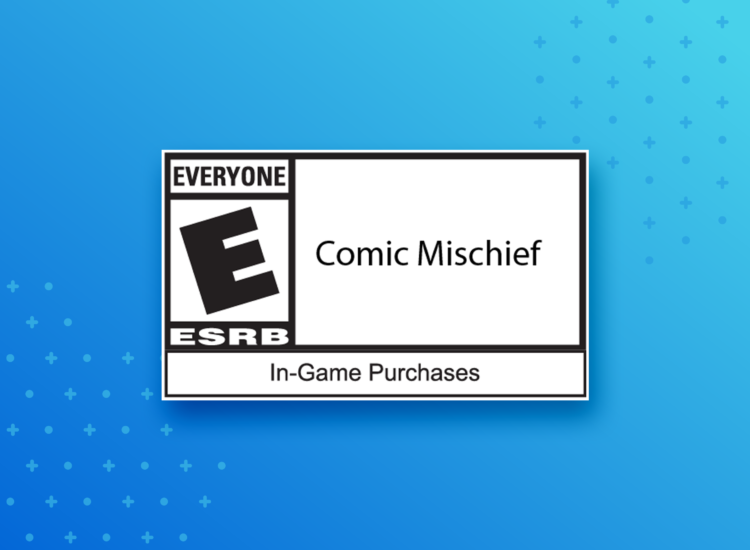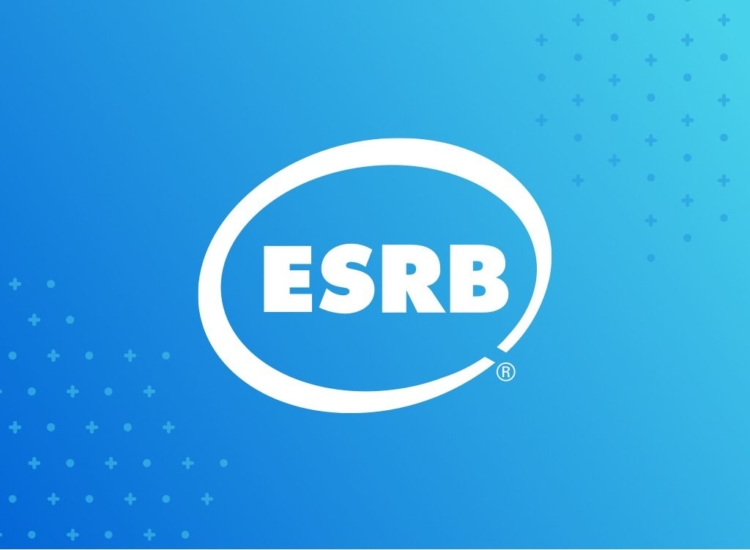What Parents Need to Know About Loot Boxes (and Other In-Game Purchases)
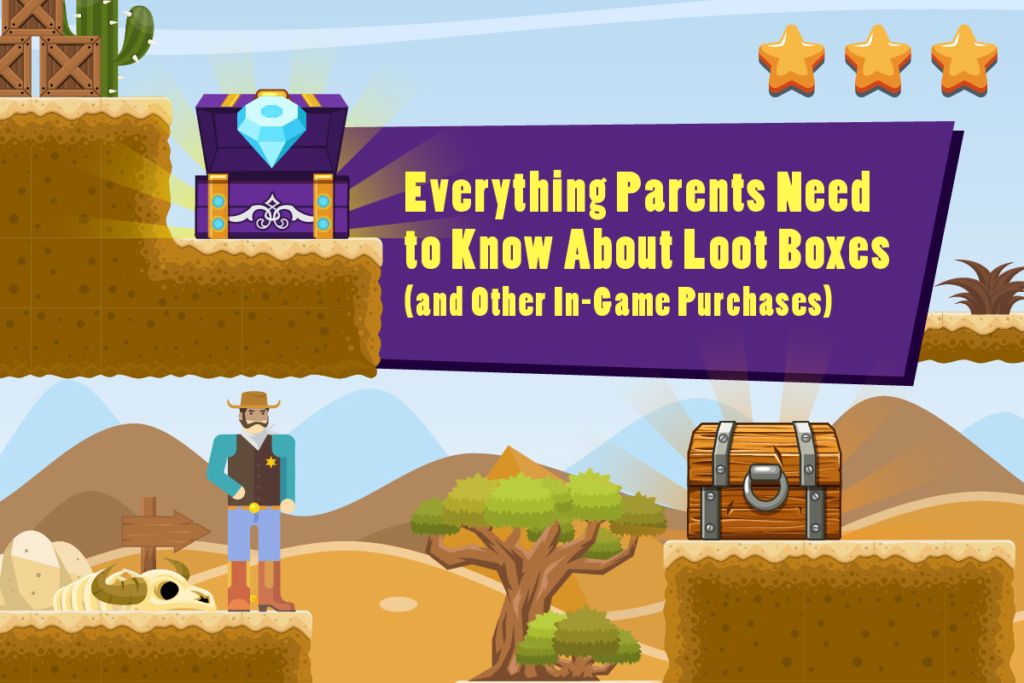
Updated July 12, 2023 — It should come as no surprise that many modern games, particularly those that can be played online or on a mobile device, allow players to make in-game purchases. In most cases, you can play through a game without ever having to spend money. But, as a parent, you might want a bit more information about the different types of in-game purchases and what you can do to limit or prevent your child from purchasing them without your OK.
How Do I Know If a Game Has In-Game Purchases?
First step, check the ESRB-assigned rating information. Games rated by the ESRB have three parts:
- Rating Categories suggest age appropriateness.
- Content Descriptors indicate content that may have triggered a particular rating.
- Interactive Elements highlight interactive or online features of a product, including if purchases of digital goods or services are offered in-game or users can interact with each other.
When it comes to making purchases with real world money, we have two Interactive Elements to look out for:
- In-Game Purchases lets you know when a game contains in-game offers to purchase digital goods or premiums
- In-Game Purchases (Includes Random Items) lets you know when a game contains in-game offers to purchase digital goods or premiums with an element of randomization (meaning the player may not know exactly what they’re getting)
When checking a game’s rating, you can find the In-Game Purchases or In-Game Purchases (Includes Random Items) Interactive Elements when searching by game title on ESRB.org’s rating search or the ESRB rating search app, and displayed on the back of video game boxes or, for digitally delivered games, on a game’s product detail page:
Note that we started assigning the In-Game Purchases Interactive Element in 2018, and In-Game Purchases (Includes Random Items) was introduced in February 2020. Games rated prior to these dates will likely not display these notices, even if they do offer in-game purchases. If you’re not sure, we recommend that you do a quick search online to find out if the game in question offers in-game purchases of any kind, especially if it is a mobile or online game. Most app and online stores provide upfront notice when there are in-game or in-app purchases.
What Can Be Purchased In-Game?
In-game purchases typically augment or personalize the content of a game. Regardless of the type of in-game purchases, it’s important to remember that they are never mandatory. Here are the key types of in-game purchases that are often offered to players:
In-Game Currency
Some games offer the ability to purchase in-game currencies that can be exchanged for content. For instance, your children may ask to purchase 1,000 “Crystals” for $10, which can then be used to buy other virtual in-game items. In many cases, you can purchase a quantity of these currencies through an online store connected to the game. However, in other cases you can also earn in-game currency just by playing.
Pay-to-Continue
Some free-to-play or free-to-start games – typically available on mobile devices – offer the ability to purchase “lives” with in-game or real currency. Most of the time lives will recharge over a period of time, but by purchasing lives players can keep playing without having to wait.
Pay-to-Win
Some games offer the ability to purchase specific items or power ups to make progress easier. Games can even offer the ability to pay to skip levels for those struggling. Of course, the player can still progress through the game without making a purchase, but it could require significantly more time.
Cosmetic Items
Lots of games allow players to create their own unique character and customize them with in-game items that reflect the player’s personality. While many games include these options, some offer the ability to purchase specific items with in-game or real-world currency. These items – which generally do not influence gameplay and are simply a visual alteration – are often referred to as “cosmetics.”
Expansions
“Expansions” vary in size and cost, but tend to be bigger chunks of new gameplay, mechanics, and/or items that extend the lifespan of a game. These usually cost less than the initial price of the game and can add just a few hours of additional gameplay, or dozens of hours of content depending upon the game.
Season Passes
When you buy a season pass for your favorite football team (in real life) you’re getting seats for every home game of the season. Buying a “season pass” for a game is similar, only instead of a seat, you’re paying for a “season” (which depending upon the game can last for weeks or months) of additional content that will gradually be released over time.
Playable Characters
Some games offer the ability to purchase new playable characters to download after the game’s initial release. Sometimes you can purchase a season pass (see above) to get all of them, while other times you can buy them individually or in “character packs.”
Loot Boxes
“Loot boxes” are like locked treasure chests that contain an array of random virtual items that can be used in the game once unlocked. “Loot box” is a catch-all term that can refer to a number of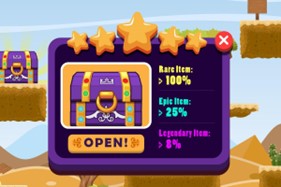
Gacha
“Gacha” mechanics are designed around Japanese “Gachapon”, which are vending machine capsules. Think of it like the machines you may have found in a local arcade or at a movie theater where you put in a quarter, spin a knob, and out pops a little toy. In games it is similar, though the player will “insert” digital currency for items of varying rarity. This could take the form of new playable/usable characters, more in-game currency, power ups, in-game items, etc. These are very similar in design to loot boxes, and the terminology is somewhat interchangeable. In most gacha games players can gain in-game currency through both regular play and/or additional purchases with real money.
How Can I Tell If a Loot Box Will Have an Item that I May Want?
No two loot boxes are the same, and games often implement loot boxes differently depending upon the overall gameplay loop. Some games list which loot boxes guarantee better (rarer) items. Meanwhile, other games may identify the relative rarity of individual items using standard terms (such as Common, Epic, Rare, Legendary), a color code and/or symbols like stars.
Nintendo, Microsoft, and Sony along with Apple and Google, all require that game publishers on their respective platforms publicly disclose “drop rates” for loot boxes. Drop rates outline the probability that a player will receive items of an in-game rarity.
Understanding “drop rates,” is simpler than it appears at first blush. The higher the “drop rate” or percentage displayed, the higher the probability that you will get a rare item from a loot box. For example, a drop rate of 25% for an “Epic” item means that the player has a 25% chance of getting an “Epic” item (or better). A drop rate of 100% for a “Rare” item means that you will always get a “Rare” item (or better).
It’s worth remembering that more often than not drop rates do not detail every possible item. They will list the chances for different tiers.
How Can I Manage How Much My Child Can Spend?
If you’re looking for peace of mind, you can take advantage of the parental controls available on virtually every game device to manage in-game spending.
Many devices, including the Xbox Series X|S, and the PlayStation 5, smartphones, and PCs have the ability to set spending limits, which I like to think of as an allowance. Other devices, like the Nintendo Switch, enable you to block purchases entirely, or require parental approval for every purchase. Some popular games, like Fortnite offer special child accounts and/or parental controls in-game to restrict or block spending in only that game.
Make sure you visit ParentalTools.org to find instructions for setting up parental controls.
What Else Do I Need to Know About In-Game Purchases?
Remember that parental controls can help you manage more than just spending. You can also manage which games your kids can play based on the assigned ESRB rating, set play time limits, manage communication with other players, and more.
Before you activate parental controls, we highly recommend that you meet as a whole family to establish some house rules that everyone can follow (that means you too, parents). 92% of parents have some kind of rules around in-game purchases for the young gamers in their household.
Tips on setting household rules, managing online play, protecting your kids’ privacy, and more visit the ESRB Family Gaming Guide.
